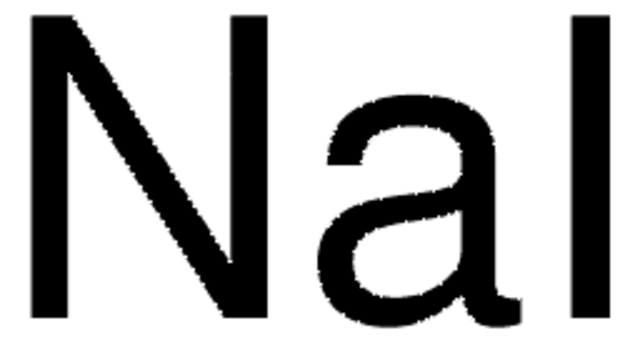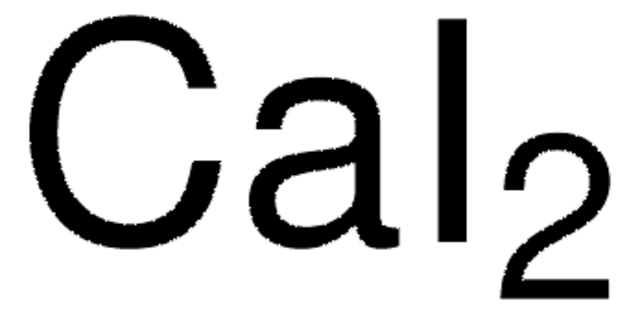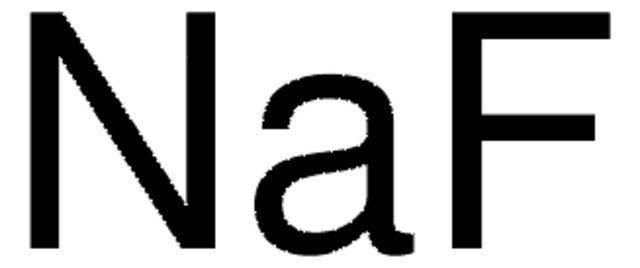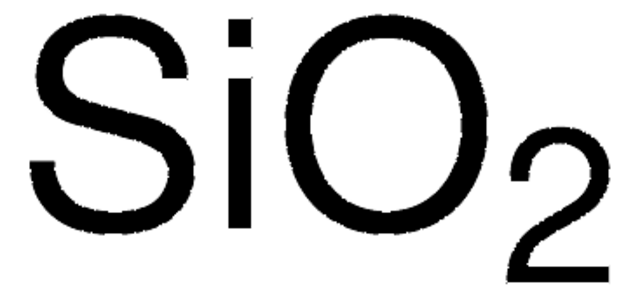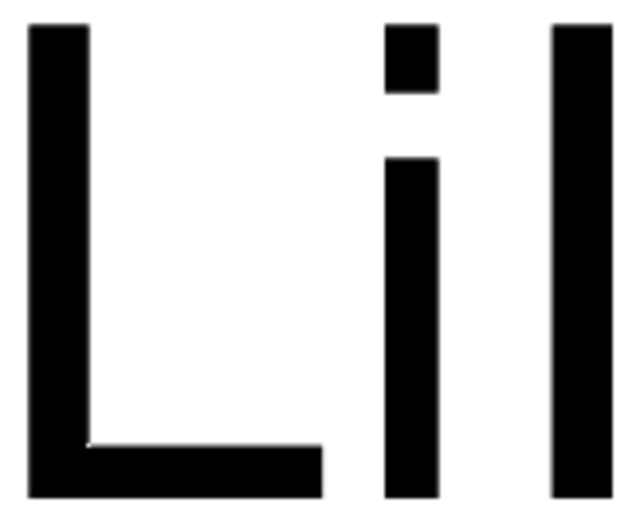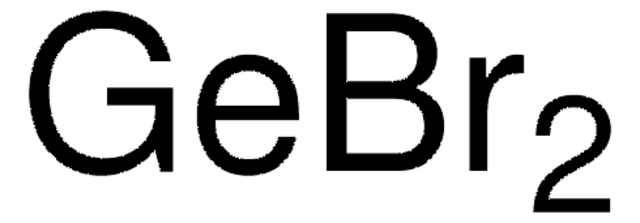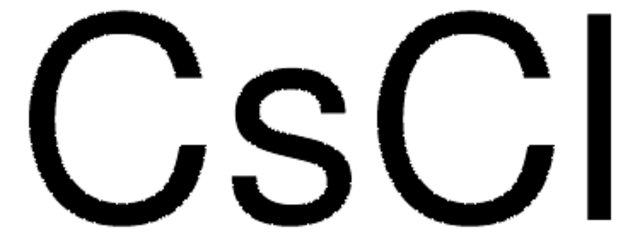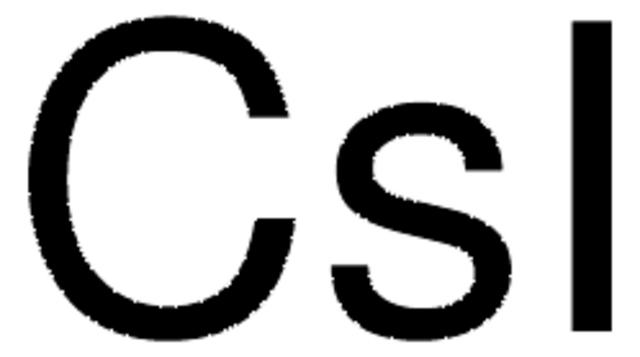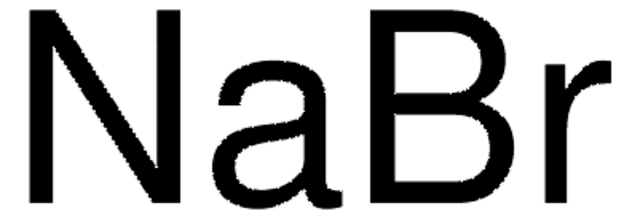439681
Sodium iodide
AnhydroBeads™, −10 mesh, 99.999% trace metals basis
Synonym(s):
Sodium monoiodide
About This Item
Recommended Products
vapor density
>1 (vs air)
Quality Level
product line
AnhydroBeads™
assay
99.999% trace metals basis
form
beads
impurities
≤15.0 ppm Trace Metal Analysis
particle size
−10 mesh
mp
661 °C (lit.)
SMILES string
[Na+].[I-]
InChI
1S/HI.Na/h1H;/q;+1/p-1
InChI key
FVAUCKIRQBBSSJ-UHFFFAOYSA-M
Looking for similar products? Visit Product Comparison Guide
Related Categories
Legal Information
accessory
signalword
Danger
Hazard Classifications
Aquatic Acute 1 - Eye Irrit. 2 - Skin Irrit. 2 - STOT RE 1 Oral
target_organs
Thyroid
Storage Class
6.1C - Combustible, acute toxic Cat.3 / toxic compounds or compounds which causing chronic effects
wgk_germany
WGK 3
flash_point_f
Not applicable
flash_point_c
Not applicable
ppe
dust mask type N95 (US), Eyeshields, Gloves
Certificates of Analysis (COA)
Search for Certificates of Analysis (COA) by entering the products Lot/Batch Number. Lot and Batch Numbers can be found on a product’s label following the words ‘Lot’ or ‘Batch’.
Already Own This Product?
Find documentation for the products that you have recently purchased in the Document Library.
Customers Also Viewed
Our team of scientists has experience in all areas of research including Life Science, Material Science, Chemical Synthesis, Chromatography, Analytical and many others.
Contact Technical Service